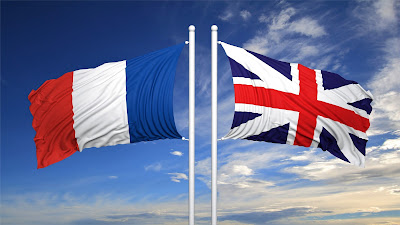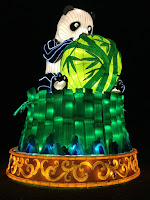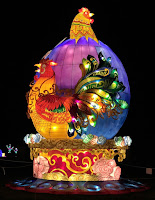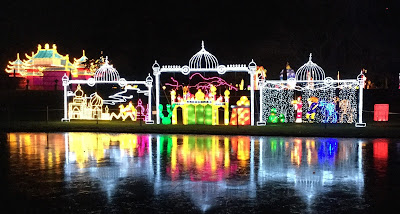An exhibition of models shortlisted for the next Fourth Plinth statue in Trafalgar Square recently opened in the National Gallery. The public are invited to comment on the next commission to occupy the plinth. They can choose between the 5 models on show.
The current occupant of Trafalgar Square's Fourth Plinth is David Shrigley's thumbs up statue 'Really Good'. I am uncomfortable with this statue. Hand signals do not always have the same meaning in other cultures and can even be offensive in other parts of the world. It should always be remembered that Trafalgar Square is a popular destination for people from all nationalities and ethnicities.
 |
| David Shrigley's statue on the Fourth Plinth in Trafalgar Square |
 |
| The End by Heather Phillipson |
Visually the piece seems to fit with the environment. It's a contemporary artwork that evokes the upbeat, fun aspect of Trafalgar Square. It will look particularly good in summer when large crowds gather for events.
The artist's suggestion of impending collapse doesn't work so well. Concerns about national security and invasion of privacy are very topical. Who does the artist intend us to understand as parasites? She doesn't stipulate. I fear that this could be problematic in the current Brexit climate.
 |
| Higher by Damian Ortega |
Damian Ortega's Higher model did catch my eye (see photo at the top and right). The Mexican artist's proposal suggests impending collapse. The ladders are reaching for the sky. This model suggests social mobility to me - something our Prime Minister has expressed her concern about.
The statue is built upon a VW van. That makes me think of the emissions scandal. I like the statue and would like to see it commissioned. I think it would look better on the South Bank. Or perhaps a spot should be found for it near the current or future American Embassy in support of the Mexican people and South America?
 |
We are living in a time of great social and constitutional upheaval in Britain and the World. As opposed to merely thinking about the past, we should use the new Fourth Plinth statue to reflect on what sort of society we want in future. Maybe the reflection should be two-way? If India wants Britain to reflect on its colonial past, maybe Britain can ask India to reflect on how its treats woman in the present day? Trafalgar Square staged a major Women's March just last weekend.
When I saw the statue I thought of Charles Handy's book 'The Empty Raincoat'. I saw not what was missing, but asked myself what do we place inside the statue today? What sort of society and leadership do we want in future? Multiple themes are possible:
1. Reflection on colonialism
2. Women in society
3. Multicultural Londoners - feature a different Londoner every day?
4. Diversity in society
5. Social mobility and education
6. Reflections on technology, security, intrusion, privacy and public spaces
7. The future of employment, pensions, healthcare, social care and leisure time
8. Reflections on sustainability and climate change against corporate concerns
9. Responsibilities towards other nations
10. What leadership qualities do we want? What should a leader's legacy be for us to want to build a future statue to them?
When I first saw this statue, it looked very uninspiring in the dark. I would propose lighting it up from the inside with different colours - rainbow colours too - to inspire people to think about the future they would like to see.
Karen Andrews is a freelance French to English translator, transcreator, content writer and editor. She has a strong background in global marketing.
Email Karen for further information via karenanglicityen@gmail.com in French, German or English.



































